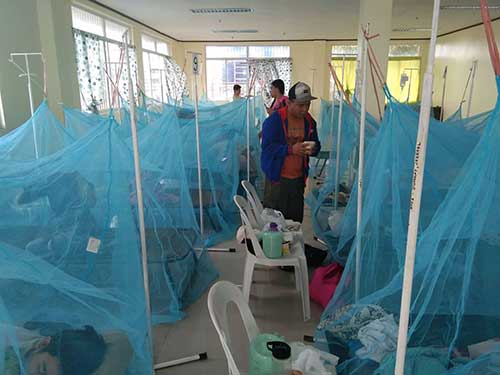
By Rjay Zuriaga Castor
The hospital care utilization rate in Western Visayas is currently at 72.04 percent, according to the Department of Health in Western Visayas (DOH-6).
Dr. Bea Natalaray of the DOH-6 Infectious Disease Section reported that as of August 25, the health facilities utilization rate remains manageable despite the continuous rise in dengue cases in the region.
Specifically, the current bed utilization rate stands at 73.31 percent, while the use of mechanical ventilators is at 44.56 percent.
“We have already disseminated the directive to reestablish dengue fast lanes in all health facilities as we continuously monitor the outbreak of dengue cases,” she added.
In terms of blood products, Natalaray assured that the region has sufficient supplies in its blood banks.
As of August 26, blood banks in Western Visayas hold 582 units of whole blood, 1,001 units of packed red blood cells, and 101 units of platelet concentrate.
“So far, we have not received any reports of shortages in our blood products, and we are monitoring blood supplies in our facilities daily,” Natalaray said.
As of August 17, the region has recorded a total of 15,688 dengue cases, including 31 deaths. An additional 3,490 cases were reported in the second week of August.
These figures represent a 199 percent increase from the 5,254 dengue cases with 24 deaths recorded during the same period last year.
The province of Iloilo remains the most affected, with 6,069 cases and 13 deaths. Negros Occidental follows with 2,418 cases and six deaths, Aklan with 1,766 cases and one death, and Capiz with 1,581 cases and five deaths.
The most affected age group is those aged 11 to 20 years, with 5,348 cases, accounting for 34.2 percent of the total cases, followed by those aged 1 to 10 years, with 4,999 cases or 32 percent.
The number of villages with clustering of cases has also increased to 897, while the number of villages deemed hotspot areas remains at 11.
Natalaray emphasized that DOH-6 continues ongoing case surveillance and serotype surveillance through its epidemiology unit, alongside ongoing vector control activities in local government units.





















